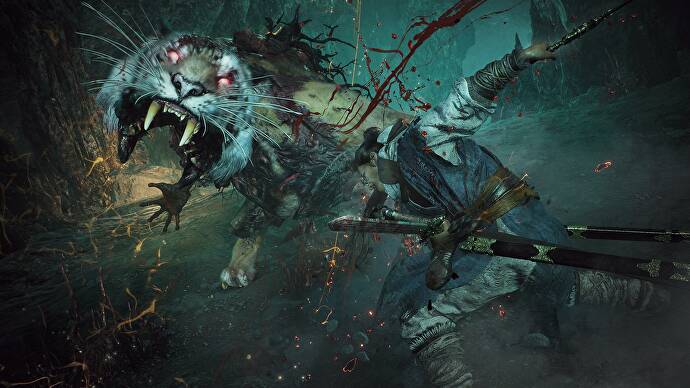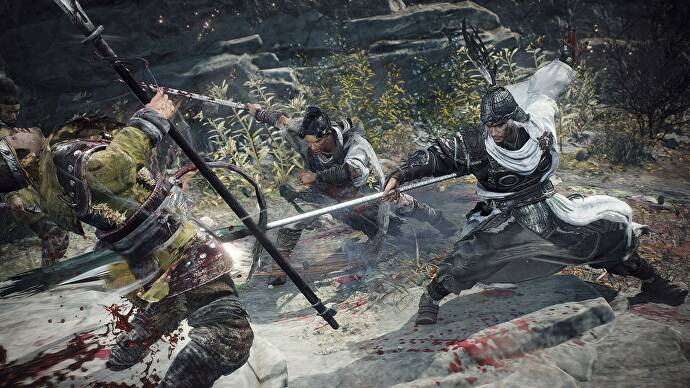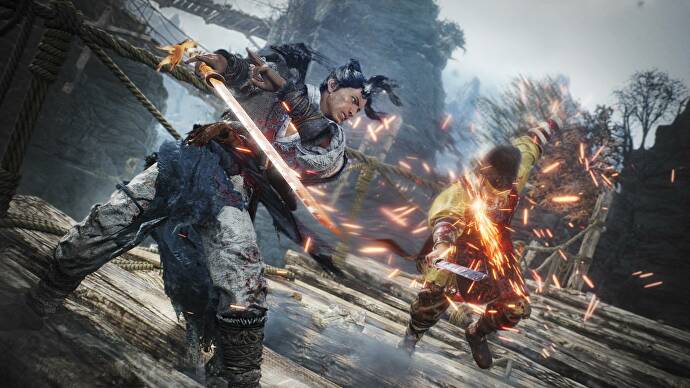We didn't even suspect Wo Long: Fallen Dynasty - the next game from the creators of Nioh - not so long ago. It was announced back at Xbox and Bethesda's Games Showcase in June, and immediately attracted the attention of everyone who even slightly loves all kinds of hardcore action-RPGs.
Wo Long: Fallen Dynasty — a new action game from Team Ninja and Koei Tecmo (no, not Rise of the Ronins - we'll see for a few years), and in a series of trailers it showed how it immediately intends to separate itself from previous Nioh games.
There is a jump button! There are no poses! You can't use ki-momentum! It's much faster! The game takes place in China, not Japan! But from the trailers, no matter how bright and well-made they are, it's hard to understand what this really means for the game. However, in the course of playing the first demo of the game, I was able to try it all out for myself... and let me tell you, the difference is just as huge and important as it was with FromSoftware's transition from Dark Souls to Bloodborne.
First, the Wo Long faster. Much faster. Jumping between positions and moving in circles with your sword pointed at an enemy is a thing of the past - instead, you're encouraged to crash into your enemies like a wave and give them little chance of escape. If they do attack, in between the standard and special moves used in martial arts, you have the opportunity to counterattack. Chinese martial arts, after all, promote an inverse relationship between aggression and self-preservation; Wo Long understands and accepts this natural flow.
Magic - or sorcery - is no less important than hand-to-hand combat
This is the soul of this game: countering and parrying. As in Bloodborne, good defense is based on an incredibly brutal and impregnable offense. Standard attacks can be parried (with fairly generous timing) and gain an advantage that allows you to dispatch your enemies in one fell swoop. But more powerful enemies—those corrupted by the power of demons, or even the demons themselves—will not fall so easily.
These more deadly enemies are armed with devastating attacks, indicated by a vicious red aura and long trigger times. Being highly telegraphable, they are ready for more devastating parries: timing them right and knocking them down during these moves will deal massive amounts of damage (as well as rip off body parts, making the rest of the fight much easier).
Aiming, understanding and reacting to these moves makes you feel like a real martial arts star: the camera pans back, you kick the tiger (or something like that) to the floor, then dive and plunge the sword into its chest, destroying its two vile claws.

While you have a stamina bar, like other Soulsbourne games, it's tied to your stamina, which is something of a mix between morale and stamina. Sorcery (read: spells) eats up that bar, and if you dodge, defend, dodge, and then blast an expensive spell, your rank will drop as you eat up and overextend your bar. Given that this morale meter actually distinguishes your "level" from that of your enemies, you need to constantly weigh whether you want to finish the fight with spells and guarantee victory, or stock up on toughness for the battles ahead.
You lose your "souls" (here it's "qi") and tenacity rank with each death, but - surprise, surprise! - you can get back everything you lost by killing the enemy who killed you in the next battle. Keeping your morale high is key, otherwise you will make things more difficult for yourself.
You may encounter a rank 20 miniboss halfway through the level, for example when you are level ten. To make sure you can face this bastard again and again (and with combat odds), you can research and plant flags; raising small and large standards will demoralize enemies and increase your strength.

Jump button. Any Nioh veteran knows that in previous games, your yokai-powered warriors were practically chained to the floor (unless you did some cool samurai kick-and-jump dodge). IN Wo Long jumping is a key element of combat and exploration. In combat, you can use it to tower over your enemies and rain down on them, but it comes with a risk/reward dynamic. Jump into an attack and you'll be swept from the air like a helpless insect, and if you jump correctly, you can break limbs or interrupt the attack.
The main function of the jump, however, is to let you sink your teeth into those great Chinese levels. While your jump is more like a small, nimble jump, there's a lot more verticality and general exploration than Nioh. And it's for the best because Wo Long is a linear game similar to Nioh and Ninja Gaiden before it.
But now that Souls-like games are increasingly insisting on open worlds, I love it: it sets Team Ninja apart from the ever-growing pack and allows it to really embrace tight level design and show what can be achieved by putting enemies, bosses and certain aspects of level design in one place - before blowing your mind something completely different at the next level.

This is not surprising, but Wo Long: Fallen Kingdom is about to become something special, a true action RPG classic. Team Ninja took everything they learned from Nioh, carefully studied the genre, and abandoned the most common path. Instead, she goes ahead with her weapons and simply takes as a model the formula that made Elden Ring the biggest game in the world, rather than copying it entirely.
The result is something unique, relentlessly brutal, and downright amazing. Wo Long: Fallen Kingdom may not be the king of Soulslikes anytime soon, but she doesn't care - she wants to be the king of Team Ninja-likes.
Wo Long: Fallen Dynasty Coming early 2023 on PC, PS4, PS5, Xbox One and Xbox Series X/S. The game will also launch on Game Pass first day.
The demo of the game is already out on PS5 and Xbox Series X/S.



